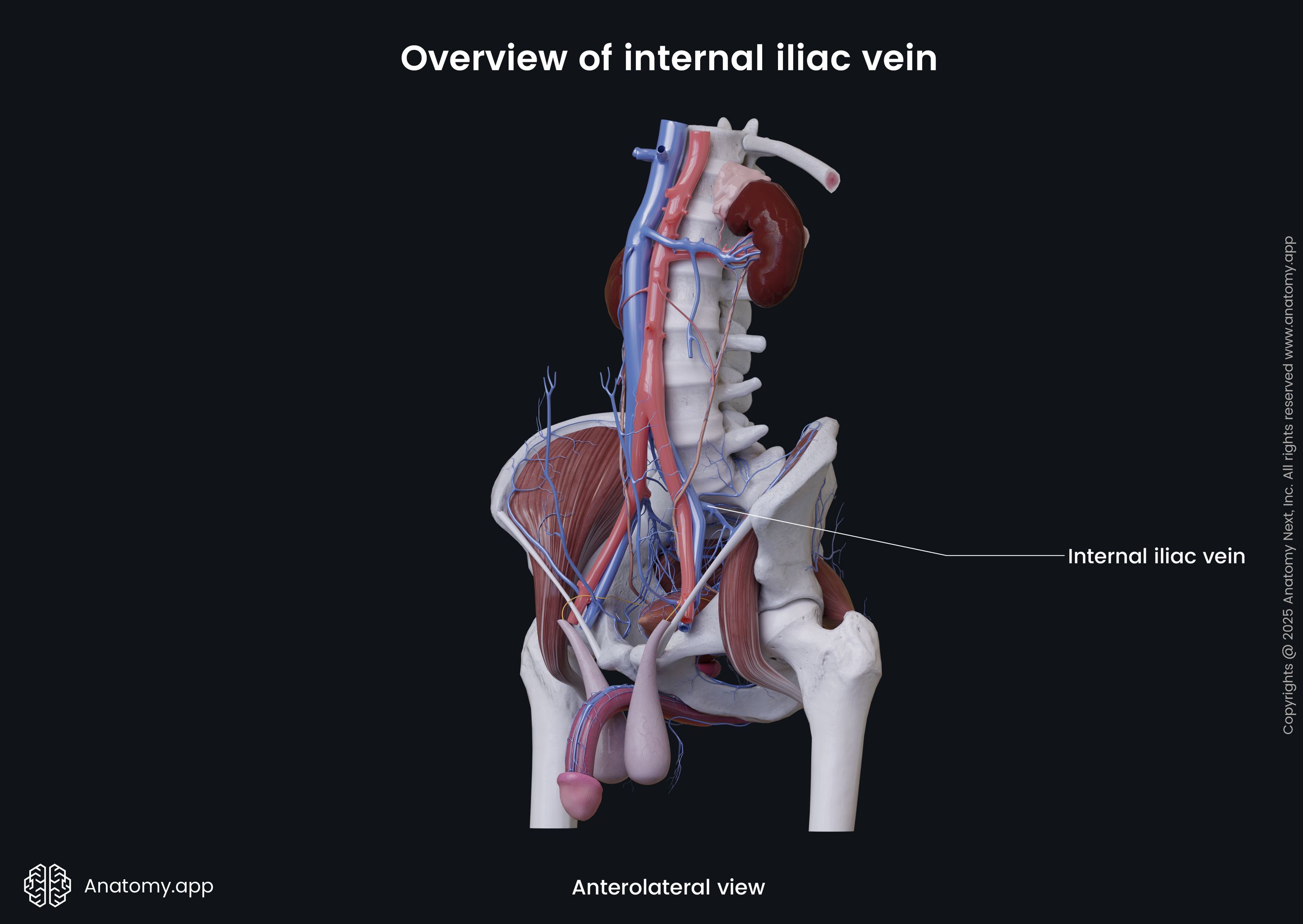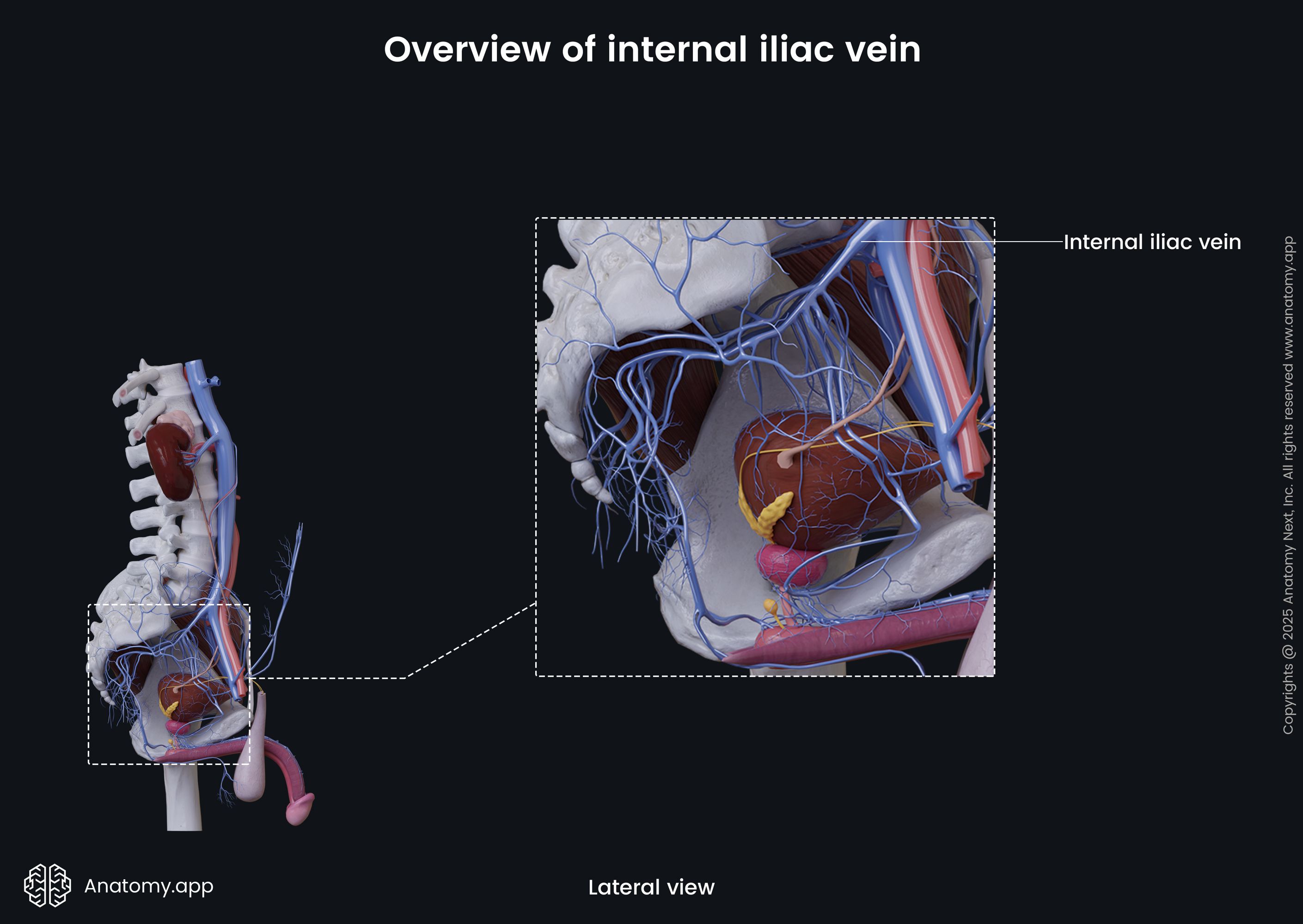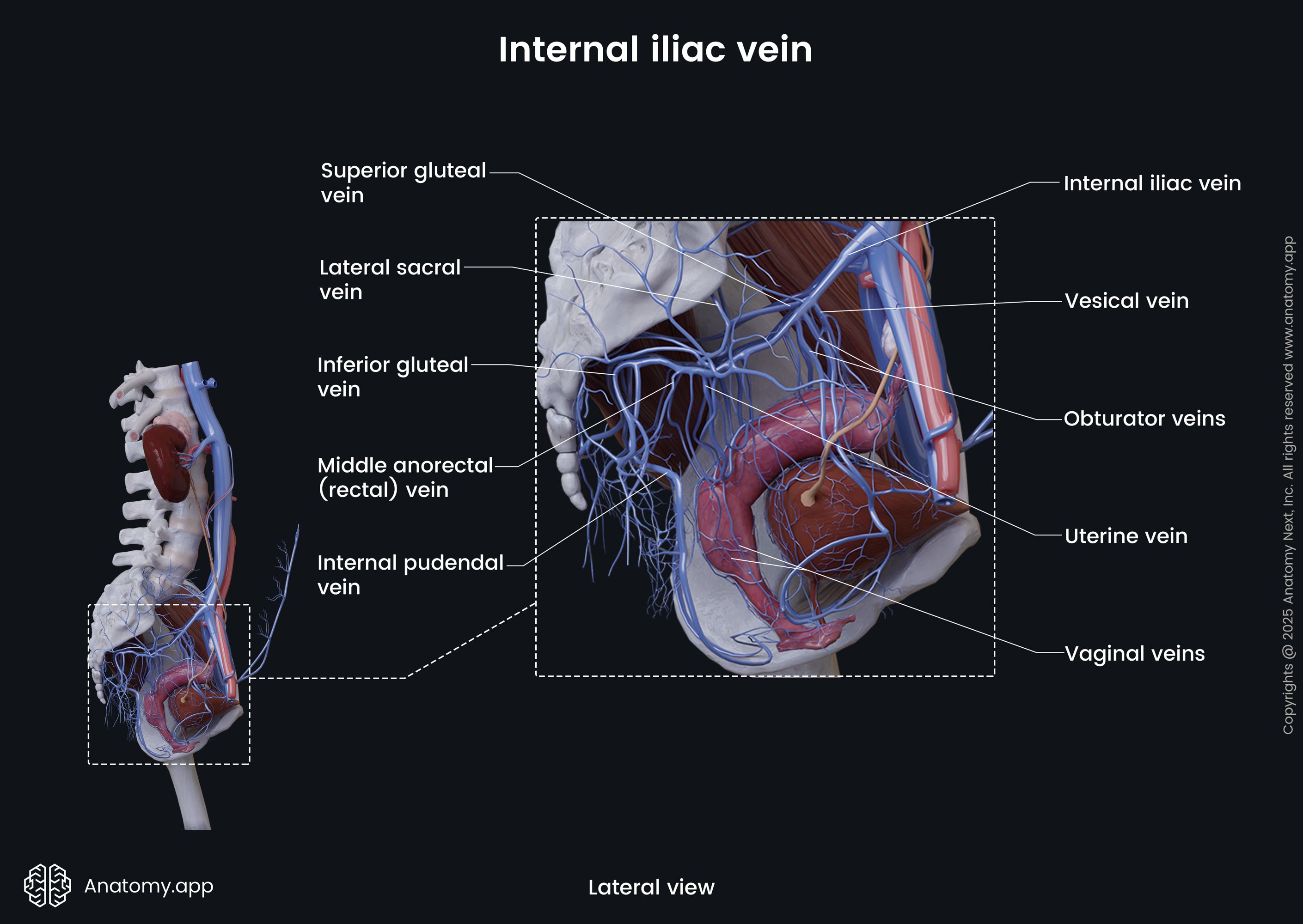- Anatomical terminology
- Skeletal system
- Joints
- Muscles
- Heart
- Blood vessels
- Blood vessels of systemic circulation
- Aorta
- Blood vessels of head and neck
- Blood vessels of upper limb
- Blood vessels of thorax
- Blood vessels of abdomen
- Blood vessels of pelvis and lower limb
- Arteries of pelvis and lower limb
- Veins of pelvis and lower limb
- Blood vessels of systemic circulation
- Lymphatic system
- Nervous system
- Respiratory system
- Digestive system
- Urinary system
- Female reproductive system
- Male reproductive system
- Endocrine glands
- Eye
- Ear
Internal iliac vein
The internal iliac vein (Latin: vena iliaca interna) is a major vein of the pelvis formed by several venous blood vessels above the greater sciatic foramen. It terminates by fusing with the external iliac vein, creating the common iliac vein. The internal iliac vein collects venous blood from the pelvic viscera, walls of the pelvis, gluteal region, and perineum.



The vein arises at the level of the greater sciatic foramen (an opening in the posterior pelvis formed by the sacrotuberous and sacrospinous ligaments) and runs behind the internal iliac artery, collecting visceral and parietal tributaries from the pelvic cavity. The internal iliac vein ascends along the lateral wall of the pelvis and reaches the linea terminalis.
At the level of the sacroiliac joint, the internal iliac vein joins the external iliac vein, forming the common iliac vein. On its course, the internal iliac vein collects the following venous blood vessels: superior and inferior gluteal, internal pudendal, obturator, lateral sacral, middle rectal, vesical, uterine and vaginal veins.

